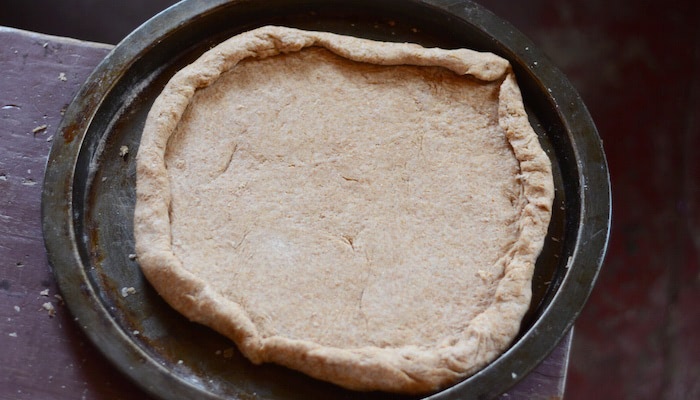
When creating or expanding menu offerings, experimenting with different crust types is a great way to generate interest and buzz that will draw in new patrons. It’s also a perfect opportunity to capitalize on popular trends, like healthier eating options.
Including whole grain and multigrain crusts among your offerings has several advantages, like meeting patrons’ expectations about better-for-you choices and dispelling the misperception that pizza cannot be part of a diet-friendly lifestyle.
Let’s take a closer look at whole grain and multigrain crusts, and the benefits they can provide to your menu.
Also check out the other articles in our Pizza Crust Types series:
Whole Grain v. Multigrain
Although the terms are sometimes used interchangeably, there is a subtle but significant difference between whole grain and multigrain.
Whole grain means that all parts of the grain kernel — the nutritious bran, germ and endosperm — are used in making the crust. Conversely, multigrain identifies that the product contains more than one grain, like barley, wheat and oats. However, more is not always more. Multigrain products can (but aren’t required to) contain some whole grains to preserve fiber, minerals and phytonutrients. More often, multigrain ingredients are refined, meaning they are stripped of essential nutrients and fiber during processing. Multigrain blends offer a unique taste and texture beyond that of whole wheat.
Verifying the crust type is simply a matter of checking the ingredients list. If the word “whole” appears before the grain type and the grains are among the first ingredients listed, the crust contains whole grain.
Crust Performance
Beyond nutrition, there are differences in how whole grain and multigrain crusts perform.
Whole grain crusts
- Offer a doughy, chewy texture when bread flour is mixed into the dough
- Hold up well to toppings, but can lack texture if not mixed with bread flour
- Can lack moisture unless enough water is added during mixing
Multigrain crusts
- Provide excellent texture, but not crispness
- Are better suited to accept flavor enhancements like butter, honey or malt
- Can lack moisture unless enough water is added during mixing
Practical Uses
Whole grain and multigrain crusts are best suited for middle-thickness pizzas or other menu items that do not require excessive crispiness. The combination of texture and chew adds a distinctly different flavor to the pizza than a standard white flour recipe. In restaurants, these crusts are often made in a single-serve style for the customer looking for a health conscious option.
Whole grain crusts are wonderful in school and institutional settings where nutritional requirements dictate the dough recipe. Governmental guidelines in these areas can be tricky to navigate. Whether you choose whole grain or multigrain crusts — or both — you need not look any further than the pizza dough and crust experts at Alive & Kickin’ Pizza Crust for the perfect products.
There’s no need to limit yourself! Check out our custom crust offerings to learn more about how we can solve for specific nutritional guidelines and make delicious, nutritious pies and menu items that are uniquely yours.
Learn more about crusts in our upcoming "Product Spotlight" articles on flatbreads, par-baked and self-rising crusts, as well as dough balls, and check out be sure to check out our Pizza Crust Types Comparison Guide for more info.








